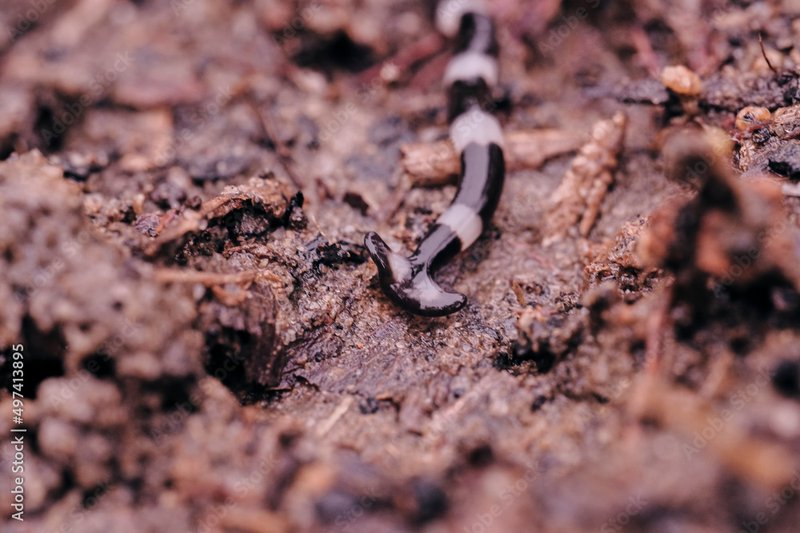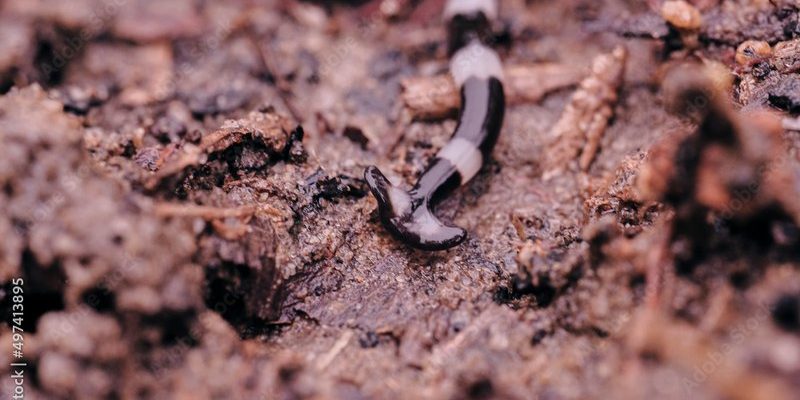
Think of hammerhead worms like the “tricksters” of the soil. They might seem harmless at first glance, but they can actually pose a threat to your garden. Just like a surprise guest at a party, they can throw things off balance. Let’s dive into what they are, how to recognize them, and what to do if you find them in your soil.
What Are Hammerhead Worms?
Hammerhead worms, also known as **Bipalium** species, are *flatworms* that belong to the phylum Platyhelminthes. These worms got their interesting name from their distinctive, broad head, shaped somewhat like a hammer. Most species range in color from brown to gray, and they can grow quite long—up to 12 inches in some cases.
These worms are *predatory*, which means they like to feast on other garden residents. In particular, they have a taste for earthworms, which are essential for soil health. Yes, the very worms that aerate and enrich your garden can fall prey to these hammerhead worms. So, understanding who they are and what they do is key to preserving your precious gardening ecosystem.
But where did they come from? Many hammerhead worms are not native to North America. They often hitch rides from tropical regions or come via imported plants. This makes it more likely for gardeners to encounter them unexpectedly.
How to Identify Hammerhead Worms
Identifying hammerhead worms involves a few key characteristics. When you first spot one, look for the following features:
- Shape: As mentioned, they have a flattened body that resembles a ribbon. The head is broader and more pronounced than the rest of the body.
- Color: Most have a dark brown or gray coloration, but some can have lighter stripes running along their length.
- Movement: Watch how they move. Unlike typical worms that slither, hammerhead worms glide along the ground, almost like they’re wriggling through the air.
You might be wondering how to tell them apart from benign earthworms. It’s all in the details! Earthworms are cylindrical and lack the distinctive hammer shape. If you can catch a closer look, you’ll notice that hammerhead worms also display a sort of *gelatinous sheen* when wet.
Why Are Hammerhead Worms in Your Garden?
If you’ve spotted hammerhead worms in your garden, you might be wondering what they’re doing there. Like many uninvited guests, they usually have an agenda. These worms are there primarily searching for food. Their favorite meal? You guessed it—**earthworms**.
Earthworms are crucial for maintaining soil health, helping with aeration and nutrient cycling. So when hammerhead worms make a home in your garden, they can disrupt this balance. Honestly, it’s like having a raccoon rummaging through your kitchen at night—it’s not just a nuisance, it could lead to bigger problems down the road.
But don’t panic just yet! Not all hammerhead worms are harmful to your garden. The key is knowing how many are around and how they’re affecting your plants. Identifying their presence early can help you manage any impact they might have.
Signs of Hammerhead Worm Infestation
So, how do you know if your garden might be suffering from a hammerhead worm infestation? There are a few signs to keep an eye out for:
- Declining Earthworm Population: If you notice fewer earthworms in your soil, it might be time to investigate further.
- Flattened Soil: Hammerhead worms tend to leave behind a flat trail in the soil where they’ve moved. This could be an indicator of their presence.
- Visible Hammerhead Worms: Of course, if you see them wandering about, that’s a clear sign!
It’s important to keep in mind that not every hammerhead worm you see means doom for your garden. A few might not cause significant harm, but if populations explode, you could face more serious issues.
How to Manage Hammerhead Worms in Your Garden
If you’ve discovered hammerhead worms and want to take action, you have a few options. Here’s the lowdown on managing them effectively:
1. **Manual Removal:** You can physically remove the hammerhead worms. Use gloves and a small shovel to scoop them up. Dispose of them far away from your garden, perhaps in a wooded area.
2. **Diatomaceous Earth:** Sprinkling diatomaceous earth around your garden can deter these pests. This natural substance is harmless to plants but can be damaging to soft-bodied creatures like hammerhead worms.
3. **Soil Health:** One of the best ways to keep hammerhead worms at bay is to maintain healthy soil. High organic matter can attract earthworms and diminish the chances of hammerhead worms thriving.
4. **Watering Techniques:** Since hammerhead worms prefer moist environments, adjusting your watering habits can help deter them. Allowing the soil to dry out between watering may make it less hospitable for these unwelcome guests.
Whatever method you choose, it’s essential to keep a watchful eye on your garden’s ecosystem.
Why It Matters to Identify Hammerhead Worms
Understanding how to identify hammerhead worms in your garden soil is more than just an interesting tidbit. It’s about protecting *your plants and your soil health*. When you know what you’re dealing with, you can act quickly, and the sooner you catch them, the better it is for the overall balance of your garden.
Additionally, you’ll be better equipped to educate others. Perhaps you have friends who love gardening, too? Sharing your knowledge about hammerhead worms could help someone else avoid a potential invasion. After all, we’re all in this gardening journey together!
In conclusion, keeping your garden thriving means tuning into the little things, including identifying and managing hammerhead worms with a mindful approach. By being aware of what they are, how they move, and the impact they have on the ecosystem, you can ensure that your garden remains a vibrant and healthy place to grow. So, next time you’re out there tending to your plants, take a moment to check for any unexpected guests. Happy gardening!

